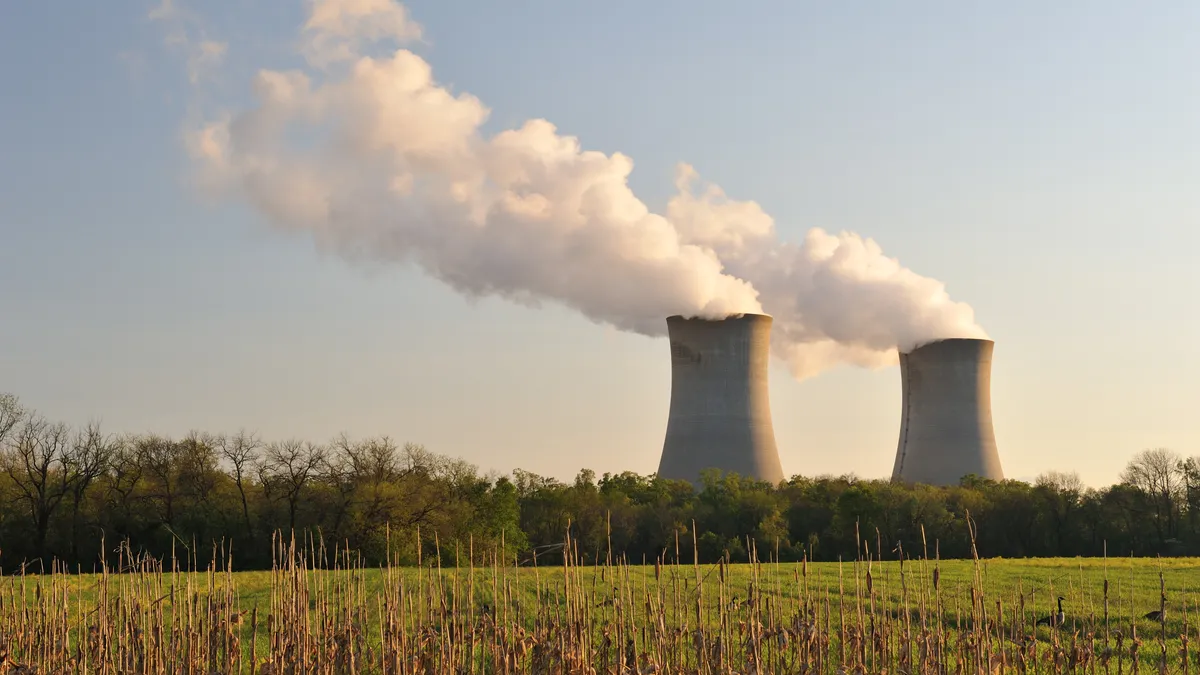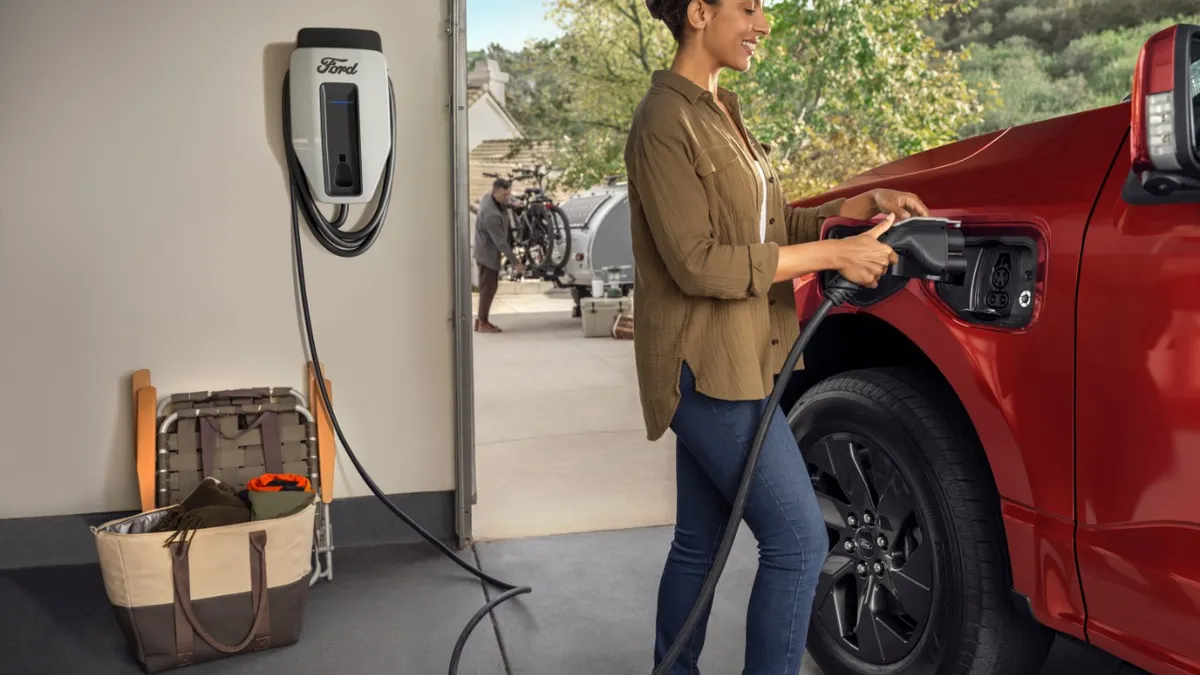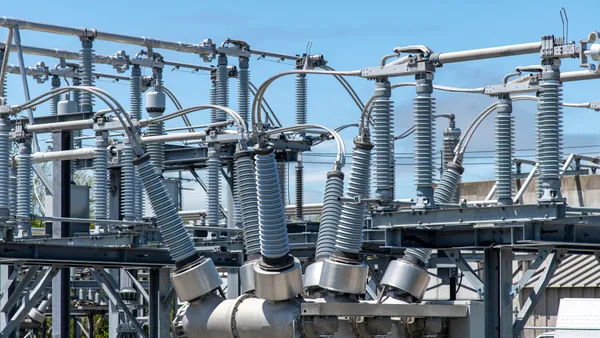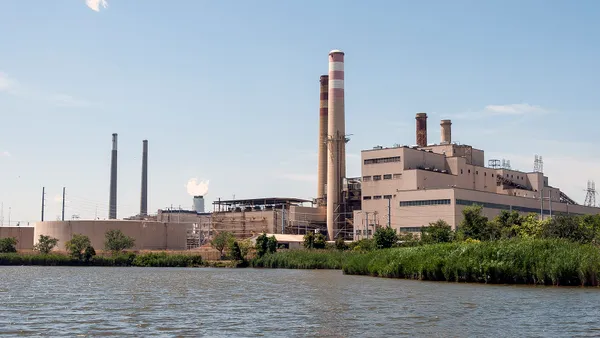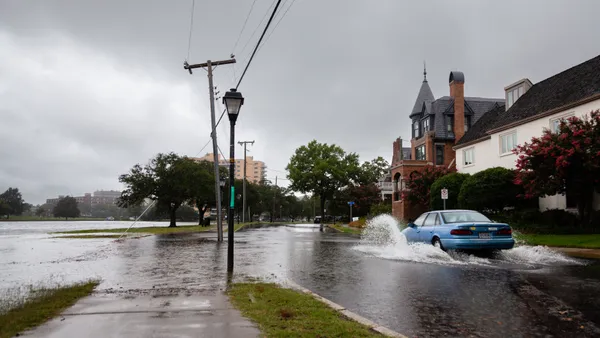UPDATE: May 20, 2024: The U.S. Court of Appeals for the D.C. Circuit on Friday rejected requests by rural electric cooperatives and a coalition of 25 states to stay new power plant carbon emissions limits, which the Environmental Protection Agency finalized in April and are scheduled to go into effect in 2032. Additional requests to stay the rule are due Friday, the court said; responses are due June 11 and replies in support of motions for a stay are due June 18.
Dive Brief:
- The National Rural Electric Cooperative Association, representing consumer-owned electric companies serving about 40 million customers, on Monday asked the U.S. Court of Appeals for the D.C. Circuit to put an immediate hold on a new power plant rule the Environmental Protection Agency finalized in April, citing the potential for “immense, immediate, and irreparable harms” to customers and the nation’s electric grid. A coalition of states also filed a motion on Monday to stay the rule.
- Beginning in 2032, EPA’s rule will require baseload coal and gas plants to limit emissions equivalent to the use of carbon capture and sequestration technologies operating at 90% efficiency.
- Facilities the rule covers would need to spend billions to comply, and “no power plant has ever achieved 90% reduction in carbon due to carbon capture sequestration,” NRECA CEO Jim Matheson said Tuesday. “The technology has not been proven at a commercial scale.”
Dive Insight:
NRECA said in its motion that EPA’s new emissions rule is unlawful and unachievable, and the agency’s overreach is a threat to “the electric grid, virtually all Americans, and the economy.”
The rule exceeds EPA’s Clean Air Act authority by requiring shifts in generation sources if emissions cannot be limited — and the method EPA lays out to limit emissions is not achievable, the group said.
CCS may ultimately play an important role in decarbonizing the U.S. grid, but the technology is “simply not ready for prime time application across the country,” Matheson said.
NRECA has multiple members that estimate compliance with the new EPA rule will cost more than $10 billion, including replacement power and stranded asset costs, according to the group’s court filing. Compliance costs for Basin Electric in North Dakota, for example, will exceed $14 billion, the group said.
NREC members own or operate more than 75 coal plants, and only three units could attempt to demonstrate CCS “at any notable level” the group told the court. Two of those units are at the same facility, the Milton R. Young plant in North Dakota, which provides electricity to Minnkota Power Cooperative.
The cooperative has been working for eight years on Project Tundra, which aims to capture emissions from the plant’s largest unit, said Mac McLennan, president and CEO of Minnkota Power. The U.S. Department of Energy is considering providing Tundra with up to $350 million in potential support, and EPA referenced the project in its final rule as a demonstration of how to potentially comply with its rule.
“It is a difficult position for us. We haven't captured a ton of CO2. We haven't put a shovel in the ground, if you will, for the construction portion of it,” McLennan said. “I have great confidence that we're going to capture substantial amounts of CO2 from our project, but for us to have a reference point of 90% removal ... gives me pause.”
If Minnkota does move forward with construction of the Tundra project, NRECA told the court, it will take five years and cost over $1.6 billion to complete, “but as designed still would not meet 90% CCS for the whole plant.”
For East Kentucky Power Cooperative, carbon storage is a significant barrier even once capture technologies are in place, President and CEO Tony Campbell said.
“We don't have the geology to store the carbon,” Campbell said. Storage would require building about 350 miles of pipeline to move the sequestered carbon to southern Illinois, at a cost of about $3.7 billion, “and the timeline to put pipe in is enormous,” he said.
“Nobody wants pipe in their backyard,” Campbell said. “It’s another reason why the timeline on this regulation is far too short.” When the costs of carbon capture and pipeline facilities are combined, the cooperative expects compliance with EPA’s rule would cost about $10.7 billion — but the cooperative mantains a balance sheet of about $3.8 billion in assets.
“There is no way we would be able to borrow that and and sustain that,” he said. Even if the cooperative could fund and build a CCS project at that level — navigating supply chain and labor constraints — Campbell said the costs could drive up average customer bills from about $157 a month to as much as $308 a month.
EPA’s rule “imposes these unbearable costs on communities least able to shoulder them,” NRECA told the court, adding that its members serve rural areas where low populations and incomes have not attracted for-profit power companies.
“Given their focus on affordability and reliability, these cooperatives already have diverse renewable generation portfolios, and NRECA members are at the forefront of exploring CCS,” the group said. “But the rule abandons this balanced approach in favor of a mandate forcing rural consumers to pay skyrocketing rates for diminished reliability.”
The state motion to stay EPA’s rule, led by North Dakota and West Virginia, argues the new rule “sets impossible-to-meet standards, removes the States’ statutory discretion to patch up the damage, and ultimately leaves regulated sources no choice but to exit the market.”
EPA declined to comment on NRECA’s motion to stay the rule. “Because this is pending litigation, [the agency] has no further information to add,” a spokesperson said in an email.





